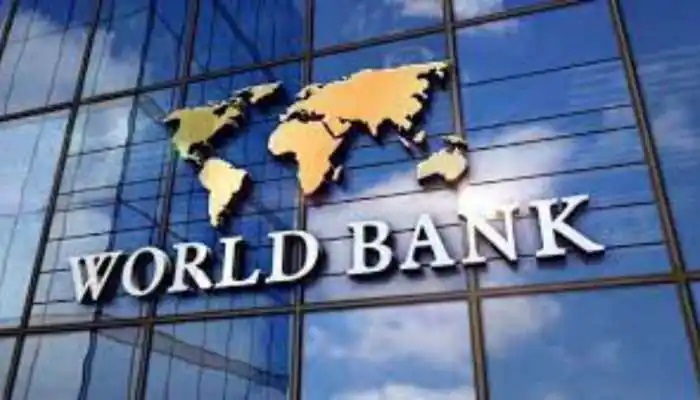Pakistan's economy stabilizing, growth forecast at 2.7%: World Bank

MG News | April 23, 2025 at 09:20 PM GMT+05:00
April 23, 2025 (MLN): Pakistan's economy is continuing to stabilize and is projected to grow by 2.7% in the current fiscal year ending June 2025, up from 2.5% in the previous year, the World Bank said.
According to the World Bank’s latest report, Pakistan Development Update: Reimagining a Digital Pakistan, real GDP growth will be supported by recovering private consumption and investment, driven by subdued inflation, lower interest rates, and improving business confidence.
The report highlights that real GDP growth will be supported by recovering private consumption and investment, driven by subdued inflation, lower interest rates, and improving business confidence.
The report notes that Pakistan’s economy is stabilizing with easing inflation, improving financial conditions, and current account and primary fiscal surpluses.
Despite the continued tight macroeconomic policy, economic growth remained weak during the first half of the fiscal year. Agriculture showed limited growth due to adverse weather and pest infestations, while industrial activity declined owing to higher input costs, increased taxes, and reduced government spending.
The services sector also recorded muted growth due to limited spillovers from weak agriculture and industrial performance.
“Pakistan’s key challenge is to transform recent gains from stabilization into economic growth that is sustainable and adequate for poverty reduction,” said Najy Benhassine, World Bank Country Director for Pakistan.
He emphasized the need for high-impact reforms such as prioritizing an efficient and progressive tax system, supporting a market-determined exchange rate, reducing import tariffs to boost exports, improving the business environment, and streamlining the public sector to build investor confidence.
Real GDP growth is projected to strengthen to 3.1% in FY26 and 3.4% in FY27, contingent on continued macroeconomic stabilization and key economic reforms.
However, growth will likely remain constrained due to tight monetary and fiscal policies aimed at rebuilding buffers and containing imbalance risks, as per the press release.
The report warns that significant downside risks persist.
“Pakistan’s economy has turned the corner and stabilized. Yet, the economic outlook remains fragile and any implementation delays in structural reforms or shifts in economic stabilization could dampen the nascent recovery and intensify external pressures,” said Anna Twum, lead author of the report.
She also highlighted elevated debt levels, policy uncertainties, global trade unpredictability, and exposure to climatic shocks as persistent risks.
This edition of the Pakistan Development Update emphasizes the need for structural reforms to mobilize private capital for improving Pakistan’s digital infrastructure and enabling the digital economy.
It points out disparities in connectivity quality across provinces and notes that high costs have made fixed broadband less accessible.
The report highlights opportunities to enhance Pakistan’s capability to digitally deliver services through ongoing development of its Digital Public Infrastructure (DPI), which requires regulatory and institutional support and strong coordination among federal, provincial, and local governments.
“Closing the digital divide and expanding access to digital services require targeted legal and regulatory reforms, increased private investment, and the development of key digital infrastructure,” said Shahbaz Khan, co-author of the report.
“Strengthening secure digital identification systems, enhancing digital payment platforms, and improving coordination between federal and provincial authorities are crucial in building an inclusive and efficient digital ecosystem.”
The Pakistan Development Update is released alongside the South Asia Development Update, a biannual World Bank report analyzing economic developments and prospects in the region.
The April 2025 edition, Taxing Times, projects regional growth to slow to 5.8% in 2025—0.4 percentage points below October projections before rising to 6.1% in 2026.
The report warns of heightened risks from global uncertainties and domestic fiscal constraints.
It features a special chapter on domestic resource mobilization, revealing that despite relatively high tax rates, South Asia’s tax revenues remain below the average for emerging markets and developing economies.
The report outlines measures to improve tax policy and administration efficiency to enhance economic resilience in a challenging global environment.
Copyright Mettis Link News
Related News
| Name | Price/Vol | %Chg/NChg |
|---|---|---|
| KSE100 | 135,939.87 307.74M |
-0.41% -562.67 |
| ALLSHR | 84,600.38 877.08M |
-0.56% -479.52 |
| KSE30 | 41,373.68 101.15M |
-0.43% -178.94 |
| KMI30 | 191,069.98 82.45M |
-1.17% -2260.79 |
| KMIALLSHR | 55,738.07 422.01M |
-1.03% -577.24 |
| BKTi | 38,489.75 45.79M |
-0.02% -8.33 |
| OGTi | 27,788.15 6.87M |
-1.24% -350.24 |
| Symbol | Bid/Ask | High/Low |
|---|
| Name | Last | High/Low | Chg/%Chg |
|---|---|---|---|
| BITCOIN FUTURES | 117,430.00 | 120,695.00 116,090.00 |
-2805.00 -2.33% |
| BRENT CRUDE | 68.80 | 69.41 68.60 |
-0.41 -0.59% |
| RICHARDS BAY COAL MONTHLY | 96.50 | 96.50 96.50 |
0.50 0.52% |
| ROTTERDAM COAL MONTHLY | 104.50 | 104.50 104.25 |
-2.05 -1.92% |
| USD RBD PALM OLEIN | 998.50 | 998.50 998.50 |
0.00 0.00% |
| CRUDE OIL - WTI | 66.66 | 67.13 66.22 |
-0.32 -0.48% |
| SUGAR #11 WORLD | 16.56 | 16.61 16.25 |
0.26 1.60% |
Chart of the Day
Latest News
Top 5 things to watch in this week
Pakistan Stock Movers
| Name | Last | Chg/%Chg |
|---|
| Name | Last | Chg/%Chg |
|---|



